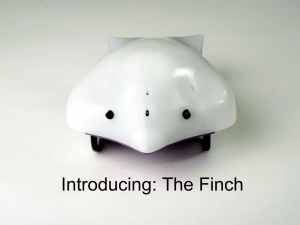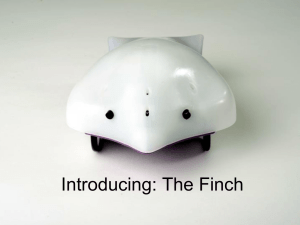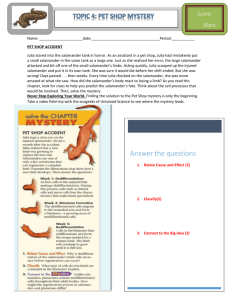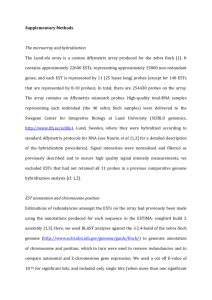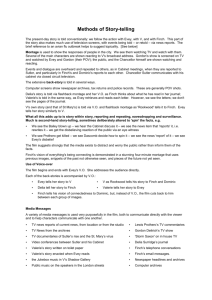Homo neanderthalensis
advertisement
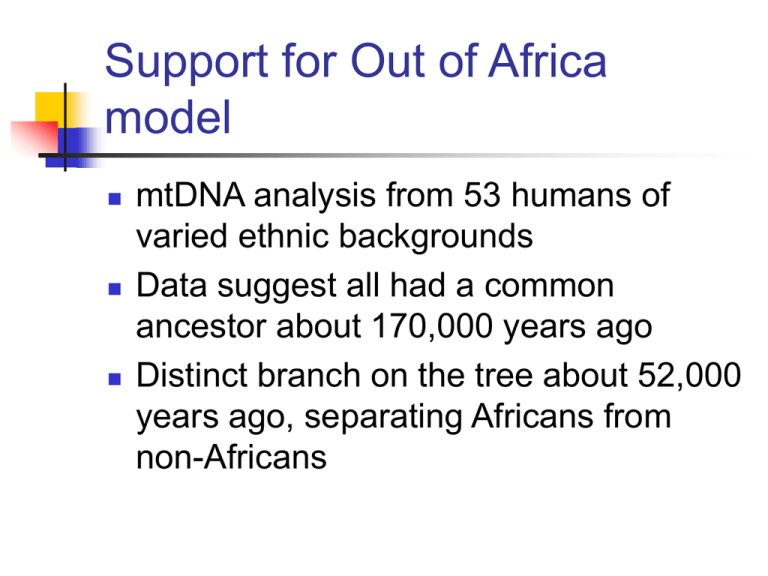
Support for Out of Africa model mtDNA analysis from 53 humans of varied ethnic backgrounds Data suggest all had a common ancestor about 170,000 years ago Distinct branch on the tree about 52,000 years ago, separating Africans from non-Africans Europe About 34,000 years ago, Homo neanderthalensis abruptly disappeared Tool makers Lived in huts or caves Dead buried with flowers, food and weapons Replaced by H. sapiens (Cro-Magnon man) Cro-Magnon man had a lighter body Cave art Probably had full language capabilities Homo neanderthalensis North America H. sapiens reached North American about 13,000 years ago Brian Sykes Chardonnay grapes France Australia South Africa Chile California South African fynbos South African fynbos South African fynbos Mediterranean garrigue Mediterranean garrigue California chaparral California chaparral Australian kwongan Australian kwongan Chilean mattoral Common features of these habitats Hot, dry summers and wet, mild winters All about the same latitude Fire-resistant shrubs with hard leaves Shrubs often with spines Mediterranean communities The five communities world-wide contain a greater variety of plants than the whole of tropical Africa and Asia combined The south European-north African Mediterranean community itself has 20,000 species of angiosperms (out of a total of 250,000 world-wide) Mediterranean communities Despite the similarity of the flora, there is little affinity among the communities Rather, each community has species derived from indigenous ancestors and adapted to a regime of fire and heavy grazing In southern Europe, oaks dominate In South Africa, heathers dominate In Australia, wattles dominate Mediterranean communities Wine tastes the same because it is the same Native plants look the same but are distinct The likeness of fynbos, kwongan, mattoral, chaparral and garrigue reflects five independent responses to the force of natural selection The native flora, not wine grapes, make the case for evolution Sharp-billed Ground Finch Small Ground Finch Medium Ground Finch Large Ground Finch Small Tree Finch Woodpecker Finch Large Tree Finch Warbler Finch Common Cactus Finch Large Cactus Finch Vegetarian Finch Yellow-faced Grassquit Galapagos finches Wallace’s Line Red Kangaroo Wombat Thylacine Tasmanian Devil Quoll Phalanger Australian mole Australian mouse Oregon salamander Sierra Nevada salamander Yellow-eyed salamander Yellow-blotched salamander Large-blotched salamander Monterey salamander Painted salamander
